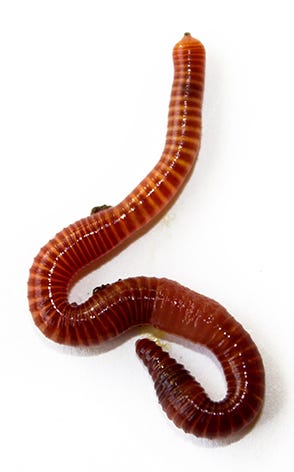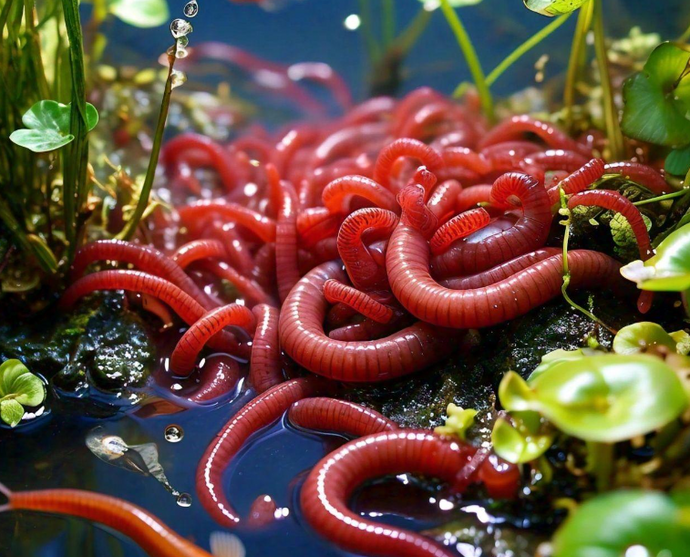Red wigglers: For eco-conscious gardening
Red wigglers: For eco-conscious gardening
Blog Article
Transform Your Yard With Red Wigglers: Idea
Red wigglers are not simply an interest for compost enthusiasts; they are pivotal agents of change for any yard. By establishing a fundamental worm container and comprehending the dietary demands of these impressive animals, gardeners can significantly boost soil top quality and plant wellness. The process of transforming organic waste into abundant, fertile castings is both simple and gratifying. The true potential of red wigglers goes past plain composting. Checking out the nuances of their treatment and the diverse applications of their by-products can unlock also greater advantages for your gardening undertakings.

Benefits of Red Wigglers
Red wigglers, scientifically known as Eisenia fetida, are typically hailed as nature's composting champs. These impressive worms offer a number of essential advantages that can dramatically boost yard wellness and productivity.

Another noteworthy benefit of red wigglers is their ability to reduce waste. By composting organic materials that would or else add to garbage dump waste, they play an important role in sustainable gardening methods. Finally, incorporating these worms into your horticulture routine can result in increased returns, healthier plants, and a much more dynamic yard atmosphere, making them indispensable allies for gardeners looking for to enhance their eco-friendly impact.
Setting Up a Worm Container
Creating a worm bin is a crucial action for any individual looking to harness the advantages of red wigglers in their gardening initiatives. A suitable worm container can be made from various materials, consisting of plastic containers, wooden pet crates, or commercially available worm containers. The very first consideration is size; a bin that is at the very least 2 feet vast, 3 feet long, and 1 foot deep is typically optimal for a little to tool number of worms.
Next, make certain correct drainage and ventilation. Pierce holes in the bottom for excess moisture to leave and in the sides for airflow. It is necessary to develop a bedding layer, using products such as shredded newspaper, cardboard, or coconut coir to supply a comfortable atmosphere for the worms. The bed linens must be moist but not soaked, resembling a wet sponge.
Area the bin in a location that keeps a regular temperature, ideally between 55 ° F and 77 ° F. Avoid straight sunlight or extreme chilly, as these conditions can harm the worms. As soon as the container is established up, enable the bed linen to resolve for a few days prior to introducing the red wigglers, ensuring they have a successful environment in which to thrive.
Feeding Your Red Wigglers
Once the worm container is developed and the red wigglers are presented, appropriate feeding comes to be crucial to preserving a healthy worm populace. Red wigglers flourish on a varied diet plan, primarily consisting of cooking area scraps and organic materials.
When introducing food, slice the scraps into smaller items to facilitate quicker usage. Furthermore, hide the food below a layer of bed linen product to avoid fruit flies and various other problems. Monitor the feeding regularity; a basic rule is to provide food every 1-2 weeks, relying on the variety of worms and the quantity of food waste produced.

Collecting Worm Spreadings
How can you inform when it's time to gather worm spreadings from your bin? The readiness of worm castings is indicated by a few crucial indicators.
Another indication is the decrease in worm task; as the spreadings gather, worms often tend to migrate towards fresher food sources. If you observe a decline in worm motion and the visibility of castings at the bottom of the bin, it's a clear signal that harvesting schedules.
To collect, delicately dig the spreadings, making sure to reduce disruption to the worms. A preferred method involves dividing the castings using light; worms often tend to burrow far from the light, enabling you to collect the spreadings extra quickly.
Harvesting frequently, about every three to 6 months, makes sure a continual supply of this nutrient-rich amendment for your horticulture ventures. Bear in mind, the high quality of your spreadings straight affects the health of your plants.
Using Castings in Your Garden
(red wiggler composting worms)Utilizing worm castings in your yard can dramatically improve dirt health and plant development - red worms. These nutrient-rich organic plant foods provide essential macro and micronutrients, enhancing the general fertility of your dirt. By integrating worm castings right into your read garden beds, you can advertise valuable microbial task, which helps in nutrition accessibility and enhances dirt framework
To use worm spreadings effectively, blend them into the leading couple of inches of soil prior to planting. You can produce a nutrient-dense fluid fertilizer by steeping worm spreadings in water for a week, after that applying the resulting "worm tea" directly to your plants.
Worm castings additionally enhance moisture retention within the dirt, minimizing the requirement for frequent watering. On a regular basis including worm spreadings into your gardening routine can lead to robust plant development, enhanced yields, and a total much healthier garden ecological community.
Final Thought
By developing a worm bin, offering proper food, and regularly gathering nutrient-rich spreadings, gardeners can cultivate a sustainable ecological community. The use of worm spreadings and "worm tea" additionally contributes to moisture retention and nutrient availability in the soil.
Report this page